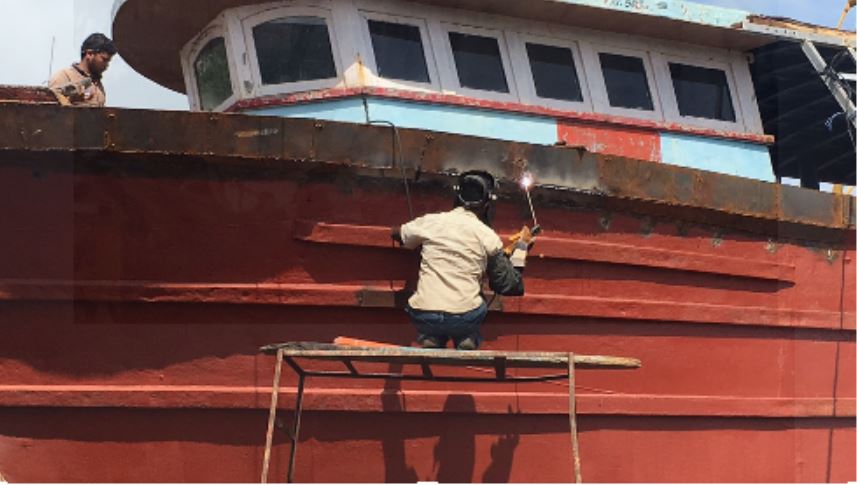It was just a normal tropical sunrise for many of the villages in the Southern coast of India. Many fishing communities along the coast of Tamil Nadu did not know what they would face that day.
On December 26, 2004, a devastating Tsunami in the Indian Ocean stuck the villages along India’s eastern coast. More than 10,000 lives were lost that day in India.
Those who escaped the Tsunami faced their worst nightmare. The tsunami destroyed homes, fishing boats, and entire village infrastructure. 154,000 houses were damaged or destroyed. The financial damage was around US$ 1 billion.
The fishing communities in the state of Tamil Nadu were worst affected and livelihood of more than 600,000 fishermen in the 570 villages along the 668-mile coast were severely disrupted.
Rebuilding Lives and Houses
Most of these affected fishermen live in poverty or just above the poverty line (less than 1.5 US dollars per day). For many of them, rebuilding their lives will not be easy, especially not without their boats. The fishermen’s only livelihood was fishing. With their boats destroyed and homes swept away, all they had left was their life and their never-dying resilience.
 The initial disaster response was far from perfect. Thousands of families were stationed in temporary shelters that lacked access to drinking water or toilets. It took a while before the local government, along with help from the “World Bank, the Asian Development Bank (ADB) and the UN Development Programme (UNDP), developed a comprehensive Emergency Tsunami Reconstruction Project (ETRP).”
The initial disaster response was far from perfect. Thousands of families were stationed in temporary shelters that lacked access to drinking water or toilets. It took a while before the local government, along with help from the “World Bank, the Asian Development Bank (ADB) and the UN Development Programme (UNDP), developed a comprehensive Emergency Tsunami Reconstruction Project (ETRP).”
The state’s disaster management authorities since then have devised detailed construction plans that require houses to be weather-proof, increasing their resilience to frequent cyclones and future Tsunamis. Together with the help of Non-profits and other stakeholders, the government began rebuilding houses for majority of those who lost their houses to tsunami.
Habitat for Humanity, a well-known global organization, built homes for those impacted. “Habitat’s assistance encouraged my family and I to move forward. They provided us with a new hope-filled future, by providing safe and decent shelter,” said one of the benefactors.
Some fishing communities received their new houses as late as 2011, waiting for 7 years. Nevertheless, much progress has been made during the last 16 years and the success can be credited to the fishermen’s resilience.
Progress, a Testament to Resilience
Despite the delays in rebuilding, and experiencing a once-in-a-lifetime kind of a disaster, the fishing community has shown remarkable resilience.
Having lost their wooden boats to the Tsunami, the fisherfolk decided to revamp their boat infrastructure. By splitting the costs between groups, the communities there now employ steel boats. The steel boats have higher survival during the cyclones and have high potential of reuse even after a tsunami. 
‘I love taking my conventional boat but after the tsunami, my boat was broken, and all my friends who I usually go to the sea with, passed away. So I am too scared to use that boat anymore,’ says one of the fisherman.
Recognizing the change in approach, the banks have stepped in to lend loans for purchase of these steel boats. “With the help of the government subsidy of Rs 5 lakh (6800 USD) and banks giving loans for about Rs 15 lakh (20,000 USD), buying or building a boat has become a reality for many,” notes a report.
From being without an address to community-ownership of disaster-resilient steel boats, the fisherfolk in Tamil Nadu have come a long way. 15 years later, the state now leads fish production in the country. According to Central Marine Fisheries Research Institute (CMFRI), Tamil Nadu had the highest fish landings at the national level in 2019.
The story of Tamil Nadu’s fisherman is testament to the innate resilience that communities across the globe possess. With the will power to succeed, a little bit of lending assistance from the banks, and a conducive free-market economy, the fishermen were once again able to establish their lives and excel in the profession they love the most.
